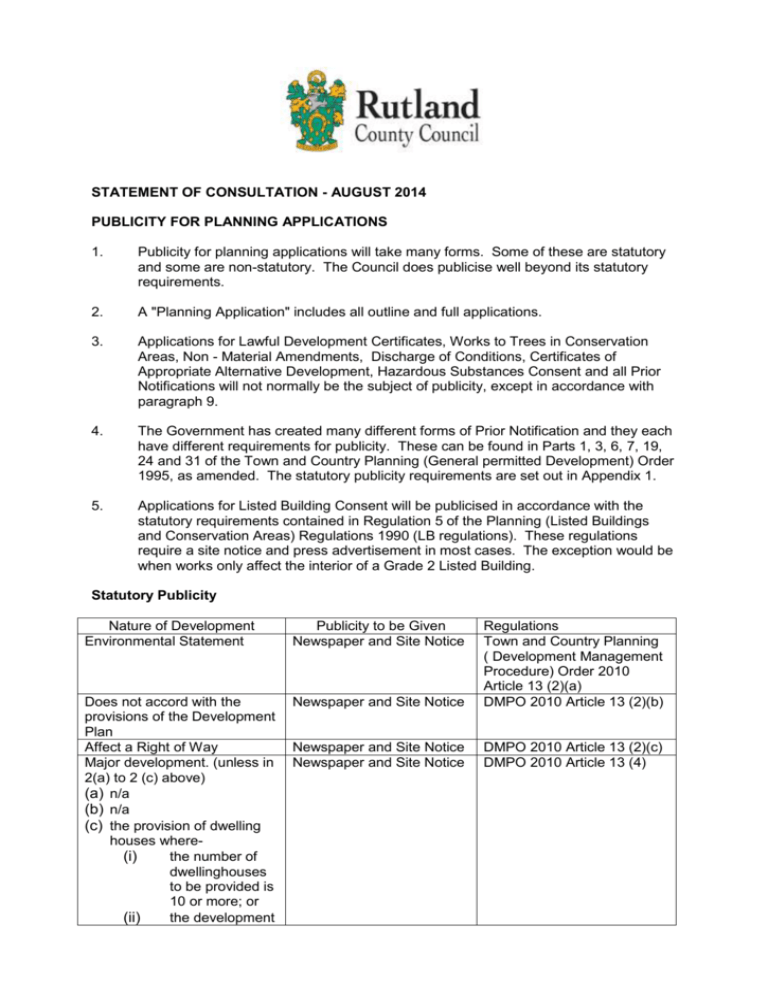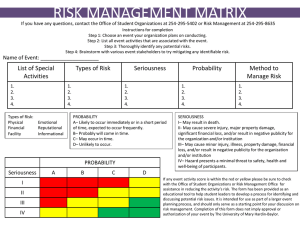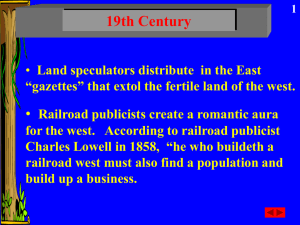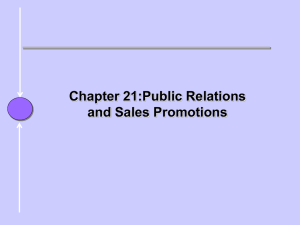publicity for planning applications
advertisement

STATEMENT OF CONSULTATION - AUGUST 2014 PUBLICITY FOR PLANNING APPLICATIONS 1. Publicity for planning applications will take many forms. Some of these are statutory and some are non-statutory. The Council does publicise well beyond its statutory requirements. 2. A "Planning Application" includes all outline and full applications. 3. Applications for Lawful Development Certificates, Works to Trees in Conservation Areas, Non - Material Amendments, Discharge of Conditions, Certificates of Appropriate Alternative Development, Hazardous Substances Consent and all Prior Notifications will not normally be the subject of publicity, except in accordance with paragraph 9. 4. The Government has created many different forms of Prior Notification and they each have different requirements for publicity. These can be found in Parts 1, 3, 6, 7, 19, 24 and 31 of the Town and Country Planning (General permitted Development) Order 1995, as amended. The statutory publicity requirements are set out in Appendix 1. 5. Applications for Listed Building Consent will be publicised in accordance with the statutory requirements contained in Regulation 5 of the Planning (Listed Buildings and Conservation Areas) Regulations 1990 (LB regulations). These regulations require a site notice and press advertisement in most cases. The exception would be when works only affect the interior of a Grade 2 Listed Building. Statutory Publicity Nature of Development Environmental Statement Publicity to be Given Newspaper and Site Notice Does not accord with the provisions of the Development Plan Affect a Right of Way Major development. (unless in 2(a) to 2 (c) above) (a) n/a (b) n/a (c) the provision of dwelling houses where(i) the number of dwellinghouses to be provided is 10 or more; or (ii) the development Newspaper and Site Notice Regulations Town and Country Planning ( Development Management Procedure) Order 2010 Article 13 (2)(a) DMPO 2010 Article 13 (2)(b) Newspaper and Site Notice Newspaper and Site Notice DMPO 2010 Article 13 (2)(c) DMPO 2010 Article 13 (4) is to be carried out on a site having an area of 0.5 hectare or more and it is not known whether the development falls within paragraph (c)(i); (d) the provision of a building or buildings where the floor space to be created by the development is 1,000 square metres or more; or (e) development carried out on a site having an area of 1 hectare or more. All other "Planning Site Notice (unless site Applications" notice is required under Sections 67 or 73 of the Planning (Listed Buildings and Conservation Areas) Act 1990) Lawful Development None. Certificates, Works to Trees in Conservation Areas or covered by a Tree Preservation Order, Non – Material Amendments, Discharge of Conditions, Certificates of Appropriate Alternative Development and Hazardous Substances Consent Listed Building Consent Newspaper and Site Notice, Application. unless works are wholly internal on a Grade 2 listed building. Development affecting the Newspaper and Site Notice. setting of a listed building. Development affecting the character or appearance of a conservation area. 6. Newspaper and Site Notice. DMPO 2010 Article 13 (5) - Regulation 5 of the LB Regulations. Section 67 of the Planning (Listed Buildings and Conservation Areas) Act 1990. Section 73 of the Planning (Listed Buildings and Conservation Areas) Act 1990. All newspaper advertisements are published in the public notices section of the Rutland Times on a Thursday. Non-Statutory Publicity 7. Applications for Reserved Matters do not require statutory publicity. They will normally be the subject of a site notice on a discretionary basis. 8. Neighbour notifications will take place on Planning and Reserved Matters Applications, but on a non-statutory, discretionary basis. They are a secondary means of publicity. The primary method is the site notice. The notifications will be undertaken on the basis of properties that, in the opinion of the case officer, are affected to a material extent by the development. The Council does not have property ownership records, so land without any buildings in active residential or commercial use will not be notified. Notifications will normally be limited to properties sharing a common boundary with an application site. For larger developments such as a new dwelling it may, at the case officer's discretion, be appropriate to notify properties on the opposite side of a road. For major developments the Council cannot hope to notify all who consider themselves affected, but the case officer will in such a case give consideration to properties that do not share a common site boundary. 9. Weekly lists of applications are provided for publicity purposes to: Amenity societies Local newspapers Local radio Published on the Council's website Parish and town councils Revised Plans submitted on a Planning Application 10. There is no statutory publicity requirement. Where an application is amended through negotiation in a manner which, in the opinion of the case officer, improves the circumstances for neighbours there is generally no need to re-consult them. The exception would be if the changes are sufficiently major that the neighbours might reasonably have expected to be notified, or if the impact on a neighbour has worsened. The Council will also have regard to the guidance in the Government’s Planning Practice Guidance. Advertisement Consents 11. There is no statutory requirement for publicity and in general the publicity in paragraph 9 is sufficient. The exception is cases which, in the opinion of the case officer, result in a material impact on a residential property. For example, an illuminated sign close to and visible from principal rooms in a residential property. 12. Non – Material Amendments The applicant is responsible for notifying anyone with an ownership interest. As the amendment is non – material then by definition it should not affect anyone. No wider publicity is therefore required. 13. Discharge of Conditions This is a matter of detail and the key elements of the development are already approved. No publicity is therefore required. 14. Works to Trees Covered by a TPO A discretionary site notice will be displayed if any tree is to be felled as this is likely to be of wider public interest. Other tree applications have a more limited effect and no publicity is required. Appendix 1 – Publicity for Prior Notification Applications Part of Schedule 2 of the GPDO Part 1 Class A Description Site Notice required Neighbour consultation required Notes Rear extension No Yes Part 3 Class IA Part 3 Class K Part 3 Class M Part 3 Class MA Part 3 Class MB Part 6 Class A Shop/Office to Dwelling Yes No B1/C1/C2/C2A/D2 to school/nursery Agriculture to A1/A2/A3/B1/B8/C1/D2 Agriculture to school/nursery Agriculture to dwelling Yes No Yes No Yes No Yes No Agricultural development No Part 7 Forestry development Part 19 Classes B and C Part 24 Ancillary to mining operations Applicant has to do if we require prior approval Applicant has to do if we require prior approval No It is a neighbour objection that triggers the prior approval process. Publicity is at the stage before the prior approval Technical consultees required Technical consultees required Technical consultees required Technical consultees required Technical consultees required Application is made and we then decide if prior approval is needed. Telecommunications Yes No Part 31 Demolition Applicant must do No No Application is made and we then decide if prior approval is needed. No Advert in press as well if affects public right of way, contrary to the development plan or site area exceeds 1 hectare. Technical consultees required









